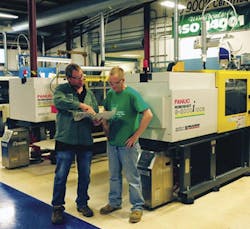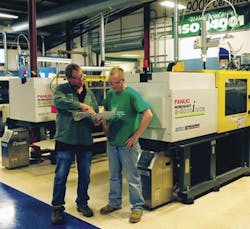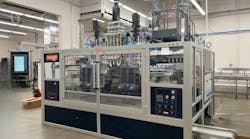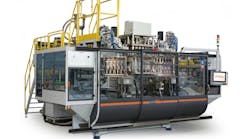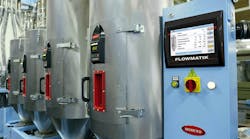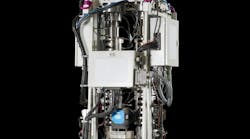ISO 50001, the standard for businesses that have improved their energy performance, is getting a facelift — and machinery users will need to be aware of the changes in the next few months to ensure compliance.
The standard established by ISO is in the process of being updated and "will include a number of improvements compared to the 2011 version," said Deann Desai, who is the convener for the group making the updates.
Desai works with the ISO/TC 301 energy-management and energy-savings group, as well as Working Group 1, made up of experts from the American National Standards Institute (ANSI), the U.S. member of ISO, which is revising ISO 50001.
She said ISO 50001 is different from other management standards because it focuses on both data and performance. "That means the organization develops a data-focused understanding of their energy consumption and energy use and is able to demonstrate improvement in energy performance, based on data over time," she said. "This allows organizations to use energy efficiency and other means to improve and achieve energy savings."
A project manager with the Georgia Institute of Technology's Enterprise Innovation Institute and the university's Georgia Manufacturing Extension Partnership, Desai cited numerous benefits to adopting ISO 50001: lowering operational energy costs; reducing greenhouse gas emissions; improving air quality; developing the ability to measure and monitor energy use throughout a facility; creating an energy-conscious culture; and moving toward renewable energy.
All ISO standards undergo a review every five years to maintain relevance with industry needs and adapt to user experiences, Desai said. Changes in the updated version, which should be in place by the middle of this year, include an update in terminology to make it more consistent with other standards and a clear statement that improvement in energy performance is required.
The number of companies adopting the standard has been growing rapidly. ISO, which establishes standards but does not accredit companies, annually surveys the accredited certification bodies around the world, requesting the number of valid certificates each body has. The most recent survey showed 20,216 ISO 50001 certificates issued in 2016, a 69 percent increase over the number awarded in 2015. That compares with 2,236 certificates in 2012 and just 459 in 2011, the standard's first year.
To gain certification, a company chooses a certification body, completes an application form, undergoes an audit and addresses any items identified in the audit. Organizations maintain certification through additional audits, called surveillance audits. Every three years, companies undergo a recertification audit to ensure they remain in compliance.
Worldwide, manufacturers of rubber and plastic products represented the sector with the third-largest number of ISO 50001 certificates in 2016, with 764. The segment came behind basic metal and fabricated metal products (1,052) and food products, beverages and tobacco (805).
Desai said she expects the growth to continue through this year, due in part to efforts like the Clean Energy Ministerial, a global forum that promotes policies and programs that advance clean energy technology.
Ontario, N.Y.-based plastics processor Harbec Inc. is one example of an ISO 50001 success story. The company's implementation of an energy-management system (EnMS) that met the requirements of ISO 50001 resulted in a 16.5 percent improvement in its energy performance (see related story on Page 14) over a threeyear period. Harbec spent $127,000 to implement the system, but the company has been saving an average of $52,000 a year on its energy costs, so the EnMS paid for itself in a mere 2.4 years.
The energy savings earned the facility certification as a platinum-level partner in the Department's of Energy's Superior Energy Performance (SEP) program. The program provides key recognition for organizations that want to show their energy-performance improvement. Information on SEP can be found at www.energy.gov/eere/amo/superior-energy-performance. SEP facilities have met the ISO 50001 standard and have improved their energy performance anywhere from 5 percent to 30 percent in a three-year period.
To achieve SEP, a facility has to implement an EnMS that meets the ISO 50001 standard and demonstrate improved energy performance. An independent third party audits each facility to verify achievements and qualify the unit at the silver, gold or platinum level, based on energy-performance improvement.
Today, energy resources at Harbec's facility are managed through a business system to sustain those savings and continue to strengthen energy performance in the future.
The U.S. provides strong support for businesses' efforts to improve their energy savings, Desai said. The Department of Energy offers tools to help with the EnMS implementation process, such as the 50001 Ready Navigator, which can be accessed at https://energy.gov/eere/amo/50001-ready-program. It provides a series of tasks to complete, and then explains how to improve and measure energy performance. Participation in the program is free.
The next step toward certification is connecting with an accredited certification operation in the U.S. A list of those firms is available at http://anabdirectory.remoteauditor.com. The searchable site is an effort of the ANSI-ASQ National Accreditation Board (ANAB).
Allan Gerlat, correspondent
